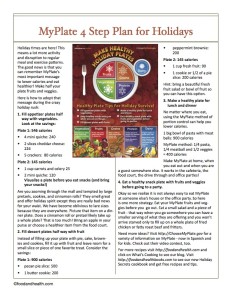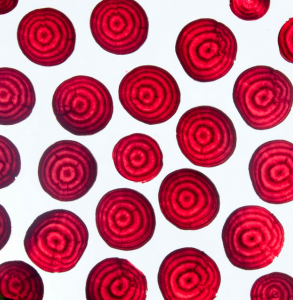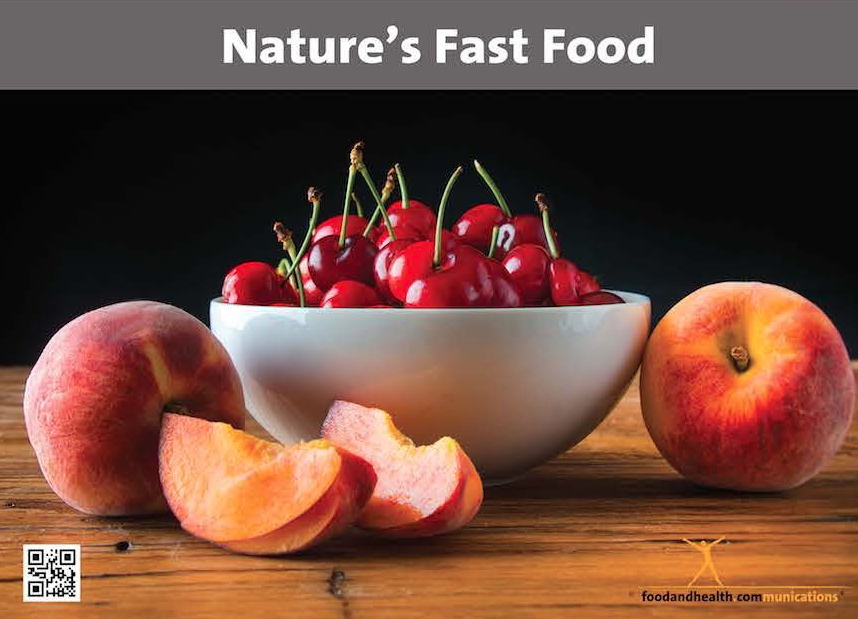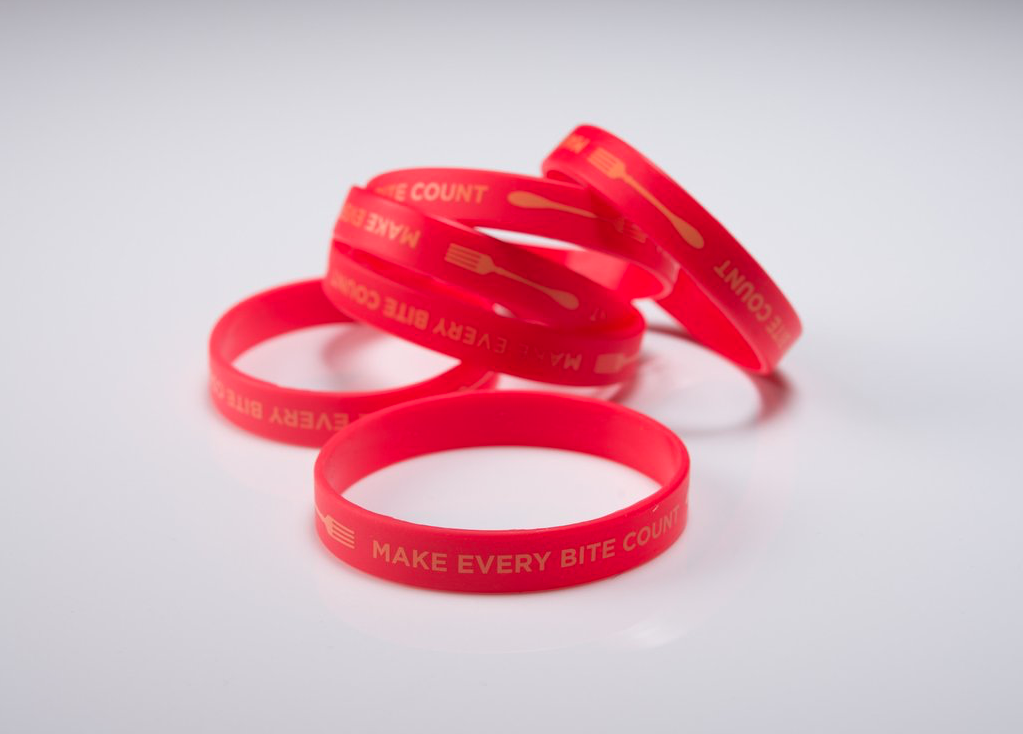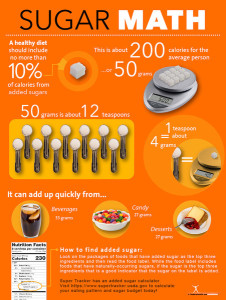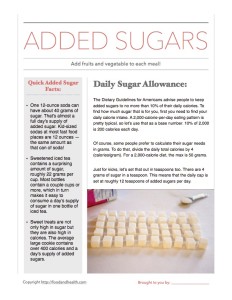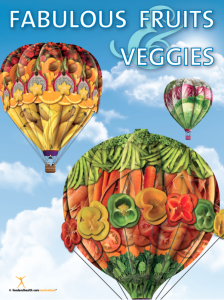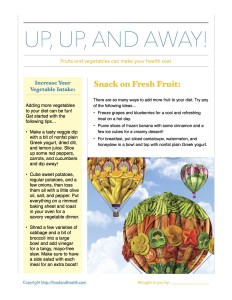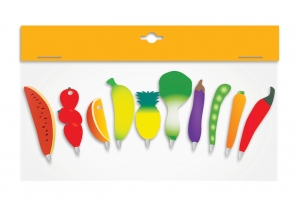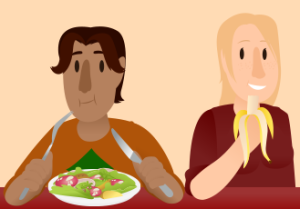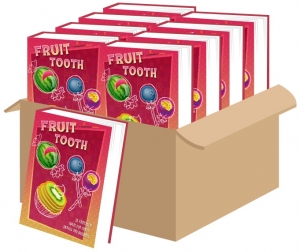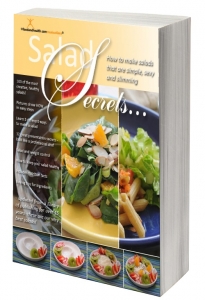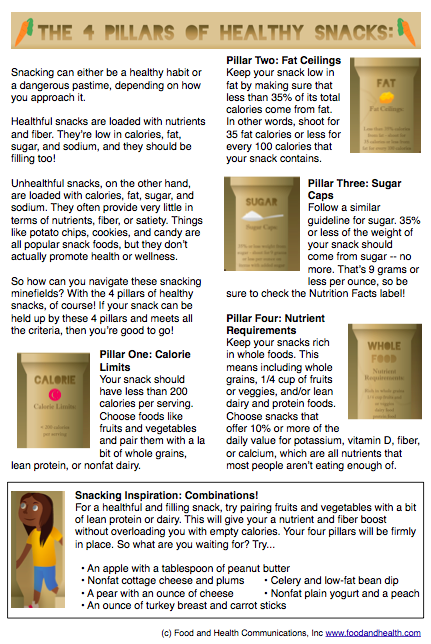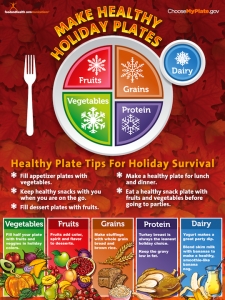 As a special holiday bonus, I want to offer you the wonderful MyPlate handout that accompanies the Holiday MyPlate poster. If you like what you see, it’s not too late to pick up some last minute-holiday resources in the Nutrition Education Store — now’s the perfect time to prepare for those New Year’s resolutions…
As a special holiday bonus, I want to offer you the wonderful MyPlate handout that accompanies the Holiday MyPlate poster. If you like what you see, it’s not too late to pick up some last minute-holiday resources in the Nutrition Education Store — now’s the perfect time to prepare for those New Year’s resolutions…
Holiday times are here! This means a lot more activity and disruption to regular meal and exercise patterns. The good news is that you can remember MyPlate’s most important message to lower calories and eat healthier! Make half your plate fruits and veggies.
Here is how to adopt that message during the crazy holiday rush:
#1. Fill appetizer plates halfway with vegetables.
Look at the savings:
Plate 1: 546 calories
- 4 mini quiche: 240
- 2 slices cheddar cheese: 226
- 5 crackers: 80 calories
Plate 2: 145 calories
- 1 cup carrots and celery 25
- 2 mini quiche: 120
Visualize a plate before you eat snacks (and bring your snacks!).
Are you zooming through the mall and tempted by large pretzels, cookies, and cinnamon rolls? They smell great and offer holiday spirit except they are really bad news for your waist. We have become oblivious to lare sizes because they are everywhere. Picture that item on a dinner plate. Does a cinnamon roll or pretzel likely take up a whole plate? That is too much! Bring an apple in your bag or choose a healthier item from the food court.
#2. Fill dessert plates halfway with fruit.
Instead of filling up your plate with pie, cake, brownies, and cookies, fill it up with fruit and leave room for a small slice or piece of one favorite treat.
Consider the savings:
Plate 1: 900 calories
- Pecan pie slice: 500
- 1 butter cookie: 200
- Peppermint brownie: 200
Plate 2: 145 calories
- 1 cup fresh fruit: 90
- 1 cookie or 1/2 of a pie slice: 200 calories
Hint: bring a beautiful fresh fruit salad or bowl of fruit so you can have this option.
#3. Make a healthy plate for lunch and dinner.
No matter where you eat, using the MyPlate method of portion control can help you lower calories.
- 1 big bowl of pasta with meatballs: 900 calories
- MyPlate method: 1/4 pasta, 1/4 meatball, and 1/2 veggies = 400 calories
Make MyPlate at home, when you eat out, and when you are a guest somewhere else. It works in the cafeteria, the food court, the drive through and office parties!
#4. Eat a healthy snack plate with fruits and veggies before going to a party.
Okay so we realize it is not always easy to eat MyPlate at someone else’s house or the office party. So here is one more strategy. Eat your MyPlate fruits and veggies before you go out. Eat a small salad and a piece of fruit — that way when you go somewhere you can have a smaller serving of what they are offering and you won’t arrive starved only to fill up on a whole plate of fried chicken or fatty roast beef and fritters.
Will this be helpful for you or your clients? If so, don’t miss the free PDF handout available below. Normally it’s exclusive for people who buy the Holiday MyPlate poster, but I want to make an exception today…



